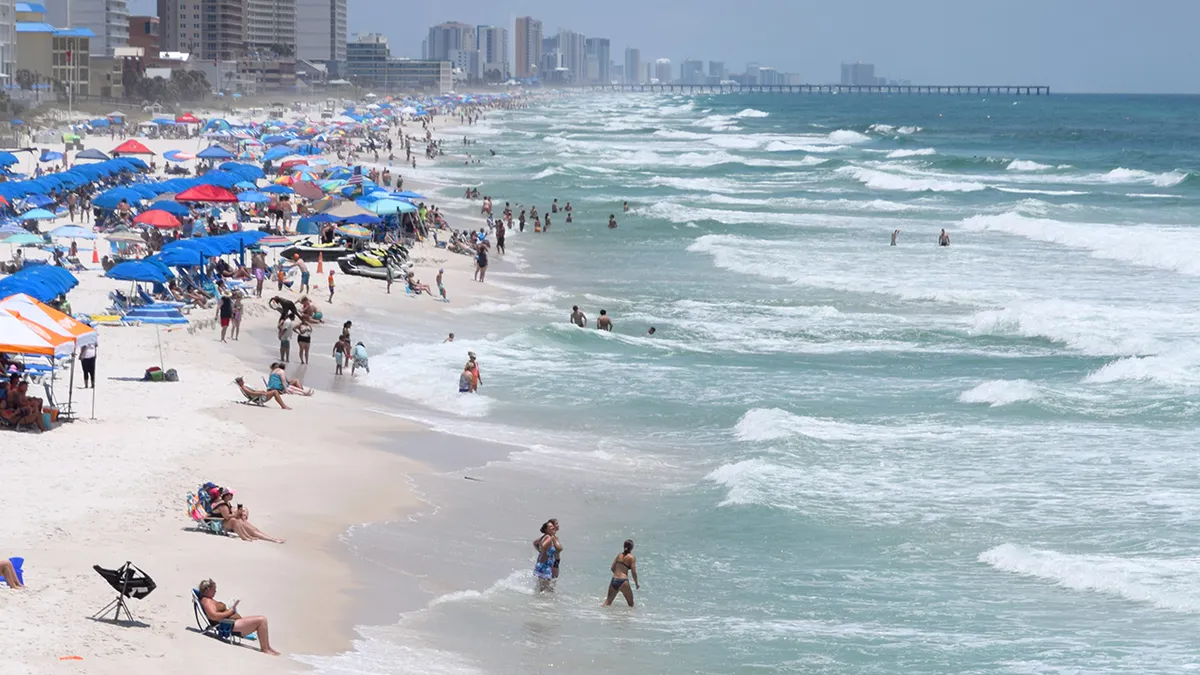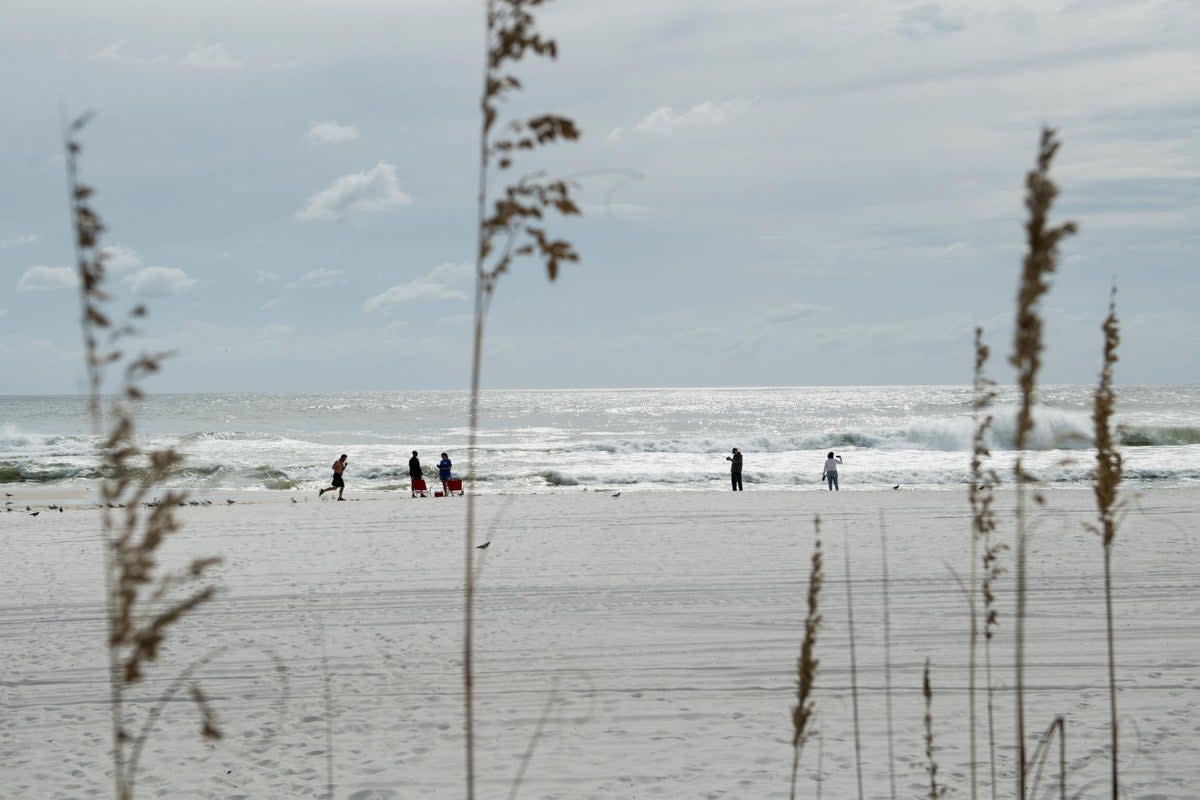Understanding Rip Currents
Panama city beach rip current – Rip currents are powerful, narrow channels of fast-moving water that flow away from the shore, often through breaks in the sandbar. They can occur at any beach, regardless of the tide or wave conditions, but are most common during high tide and when waves are large.
Panama City Beach rip currents, treacherous whirlpools that can pull even the strongest swimmers out to sea, have claimed numerous lives over the years. The relentless pull of these currents has contributed to the drownings in Panama City Beach , a somber reminder of the dangers that lurk beneath the seemingly tranquil waters.
Formation and Dynamics of Rip Currents, Panama city beach rip current
Rip currents are formed when water from breaking waves rushes back towards the ocean. Some of this water is pushed back towards the shore, while some is pulled back out to sea. The water that is pulled back out to sea is what creates the rip current.
The relentless rip currents of Panama City Beach can be as unpredictable as the Dodgers vs Angels rivalry. Dodgers vs Angels games often swing wildly, with both teams trading blows like the unpredictable tides. Just as the beachgoers must remain vigilant against the hidden dangers lurking beneath the waves, baseball fans must keep their eyes peeled for the unexpected twists and turns of a Dodgers vs Angels matchup.
Yet, even in the face of such volatility, both Panama City Beach and the Dodgers vs Angels rivalry hold an irresistible allure, drawing visitors and fans alike to witness the spectacle.
Rip currents typically flow at speeds of 1 to 2 feet per second, but they can reach speeds of up to 8 feet per second. They can also be very narrow, only a few feet wide, or they can be as wide as 100 feet or more.
Visual Cues to Identify Rip Currents
There are several visual cues that can help you identify rip currents:
- A break in the line of breaking waves
- A choppy, turbulent area of water
- A channel of water that is moving faster than the surrounding water
- A line of seaweed or debris that is moving away from the shore
Potential Dangers and Risks Associated with Rip Currents
Rip currents can be very dangerous, especially for weak or non-swimmers. If you are caught in a rip current, do not panic. Try to stay calm and float. Do not try to swim against the current. Instead, swim parallel to the shore until you are out of the rip current.
If you are unable to swim out of the rip current, call for help. A lifeguard or other trained rescuer will be able to help you.
Panama City Beach’s treacherous rip currents often remind us of the fragility of life, a reminder that echoes in the realm of sports. Just as in the game of baseball, where the Brewers and Angels face off in a battle of predictions, so too must we navigate the unpredictable currents of the sea, ever vigilant and respectful of its unseen forces.
Safety Measures for Rip Currents: Panama City Beach Rip Current

Rip currents can be dangerous, but there are steps you can take to stay safe. If you find yourself caught in a rip current, the most important thing to do is to stay calm and not panic. Do not try to swim directly back to shore, as this will only tire you out. Instead, swim parallel to the shore until you are out of the rip current. Once you are out of the rip current, swim back to shore at an angle.
Here are some additional safety precautions for swimmers and beachgoers:
- Swim at a beach that has a lifeguard.
- Swim in designated swimming areas.
- Obey the instructions of lifeguards and beach safety personnel.
- Be aware of the weather conditions and water temperature.
- Do not swim alone.
- If you are not a strong swimmer, wear a life jacket.
Role of Lifeguards and Beach Safety Personnel
Lifeguards and beach safety personnel play a vital role in rip current management. They can help to identify rip currents, warn swimmers about them, and rescue swimmers who are caught in them. Lifeguards are also trained to perform CPR and first aid.
Beach Conditions and Forecasting
Rip currents are powerful, narrow channels of fast-moving water that can pull swimmers away from the shore. They are often difficult to see and can occur at any beach, regardless of the weather conditions. However, certain weather conditions can increase the risk of rip currents, including:
- Strong winds: Winds blowing onshore can create waves that break near the shore, creating a strong current that can pull swimmers away from the beach.
- Large waves: Large waves can create a strong undertow that can pull swimmers away from the shore.
- High tides: High tides can increase the depth of the water near the shore, making it easier for rip currents to form.
There are a number of methods that can be used to forecast and predict rip currents, including:
- Wave height and direction: The height and direction of the waves can be used to predict the likelihood of rip currents forming. Waves that are breaking near the shore and waves that are coming from different directions are more likely to create rip currents.
- Tides: The tides can be used to predict the likelihood of rip currents forming. High tides are more likely to create rip currents than low tides.
- Wind speed and direction: The wind speed and direction can be used to predict the likelihood of rip currents forming. Strong winds blowing onshore are more likely to create rip currents than weak winds blowing offshore.
In addition to these methods, there are a number of seasonal and geographic factors that can influence rip current activity. For example, rip currents are more common in the summer months when the water is warmer and the waves are larger. Rip currents are also more common on beaches with a steep slope and a narrow surf zone.
Understanding Rip Currents
Rip currents are powerful, narrow channels of fast-moving water that can pull swimmers away from the shore. They are often difficult to see and can occur at any beach, regardless of the weather conditions. However, certain weather conditions can increase the risk of rip currents, including:
- Strong winds: Winds blowing onshore can create waves that break near the shore, creating a strong current that can pull swimmers away from the beach.
- Large waves: Large waves can create a strong undertow that can pull swimmers away from the shore.
- High tides: High tides can increase the depth of the water near the shore, making it easier for rip currents to form.
There are a number of methods that can be used to forecast and predict rip currents, including:
- Wave height and direction: The height and direction of the waves can be used to predict the likelihood of rip currents forming. Waves that are breaking near the shore and waves that are coming from different directions are more likely to create rip currents.
- Tides: The tides can be used to predict the likelihood of rip currents forming. High tides are more likely to create rip currents than low tides.
- Wind speed and direction: The wind speed and direction can be used to predict the likelihood of rip currents forming. Strong winds blowing onshore are more likely to create rip currents than weak winds blowing offshore.
In addition to these methods, there are a number of seasonal and geographic factors that can influence rip current activity. For example, rip currents are more common in the summer months when the water is warmer and the waves are larger. Rip currents are also more common on beaches with a steep slope and a narrow surf zone.
Safety Measures for Rip Currents
If you are caught in a rip current, the most important thing to do is to stay calm. Do not try to swim against the current, as this will only tire you out. Instead, swim parallel to the shore until you are out of the rip current. If you are unable to swim, you can float or tread water until help arrives.
Here are some other safety tips to keep in mind when swimming in the ocean:
- Swim at a beach that has a lifeguard.
- Swim in a group.
- Be aware of the weather conditions and the tides.
- Do not swim in areas where there are rip currents.
- If you are caught in a rip current, stay calm and swim parallel to the shore until you are out of the rip current.
Panama City Beach’s notorious rip currents can be a harrowing experience, but for those seeking a thrilling baseball matchup, the Brewers vs. Padres prediction offers a welcome respite. brewers vs padres prediction The game promises a clash of pitching prowess and offensive firepower, sure to keep fans on the edge of their seats.
Returning to the treacherous waters of Panama City Beach, the rip currents remain a formidable force, demanding respect and caution from any who dare to venture into their relentless grip.
The relentless rip currents of Panama City Beach, a constant threat to unwary swimmers, offer a stark contrast to the thrill of the dodgers vs rockies prediction. Yet, beneath the surface of both lies a shared element of unpredictability, a reminder that even in the most familiar of waters, danger can lurk.
